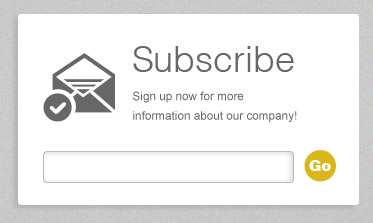Email newsletters are great. They can be simple or complex, delivered on any schedule, and can range from promotional to informational to just plain fun. But often, they’re an overlooked part of the brand experience. They walk this middle ground between website and social media.
Because they are so versatile, they are a crucial part of a brand’s overall success strategy.
What an Email Newsletter Can Be
Informational Corporate Newsletter
We’ve all gotten them. While they can seem a bit boring if executed incorrectly, the corporate newsletter is a way to send out information about upcoming events, staff spotlight pieces, tout recent awards won, or anything similar. I have to admit, I rarely read more than the “Corporate Calendar” piece from these newsletters, but then again, I haven’t seen many that held my attention. It’s all in the presentation of your email newsletter design.
Promotional Sales Piece
This one is a few poorly-chosen words away from residing in the spam folder. Certainly, a newsletter can be promotional without being spammy, but it’s probably best to keep these short and to the point. If you’re a restaurant or bar, weekly meal and drink specials are perfectly acceptable.
Special Event/Holiday Greetings
The thought behind these custom email newsletter designs is really just to provide something in an email inbox that isn’t seeking a return. Wishing your customers Merry Christmas or a Happy New Year is a great email blast. Thanking customers for a great year is fantastic. These direct emails show customers you care, without necessarily including a direct call to action.
What Email Newsletters Accomplish
Email newsletters are great for a couple different reasons. They show your customers (or potential customers) that you’re actively engaged; that you’re not just taking their money and disappearing. As customers see that you will be around for a while, actively informing them of upcoming events or promotions, they’ll be much more likely to spend some real money.
They can also act as a reminder for customers (or, again, potential customers) that you exist. That seems weird to say, but a great way to miss out on a customer is by being forgotten. Remind customers you are ready to go to work for them and they’ll remember to, at least, check you out before making a buying decision.
The Path of Least Resistance
Putting together newsletters is a lot of work though, right? It certainly can be, but it doesn’t have to be. Of course, letting a design agency handle your email newsletter design is a great idea, but content can easily be re-purposed from other places.
The easiest way to compile a newsletter is to aggregate content from your news or blog section and throw in a couple of helpful links or event calendar. Many of your customers may not have read the news or blog articles in your site. This is a great way to get that content in front of them.
How To Get People to Sign Up for Email Newsletters

There are also the obvious ways to gather email addresses, like simply asking for them within your website or Facebook page in the form of a signup form.
What Not to Do
There are a couple great ways to get people to UNsubscribe from your newsletter: 1) sending DAILY emails and 2) signing people up without permission.
The first (sending daily emails) is a sure-fire way to get people to unsubscribe. Thousands of emails flood into inboxes on a daily basis and people are just looking for reasons to unsubscribe from mailing lists. Keep the frequency to once a week, maximum, – and the content relevant – and you’ll have no problem retaining your readership.
Number 2 (signing people up without permission) is a bad idea for several reasons, the most notable of these is that it’s illegal. You must have permission to add someone’s email address to a mailing list. Doing this is illegal and will most certainly call for unsubscribes.
Give Us Your Thoughts
Hope this gets you started on the path to thinking about your own email newsletter as an extension of your overall branding and content strategy. If you have questions or would like some assistance getting the ball rolling, give us a shout. We’d love to put a stategy in place for you to execute your email newsletter and start connecting with your customers.